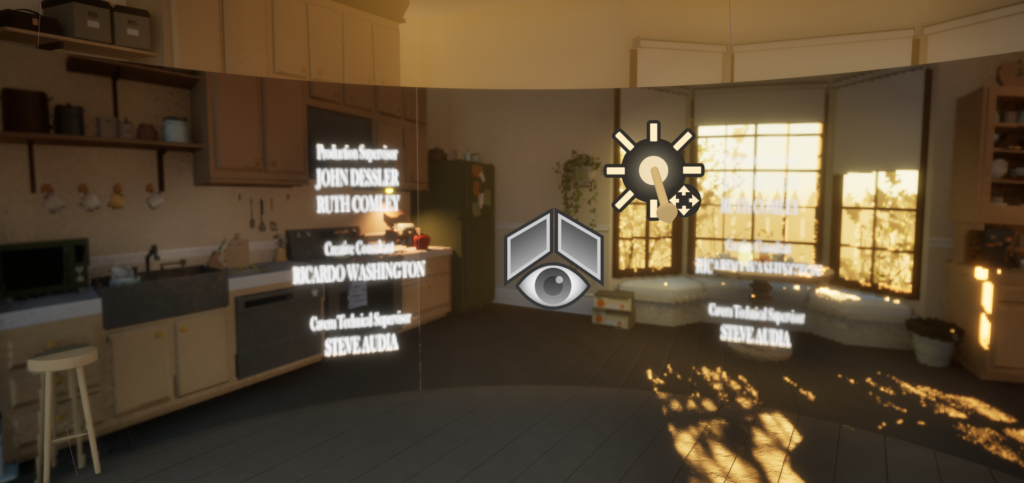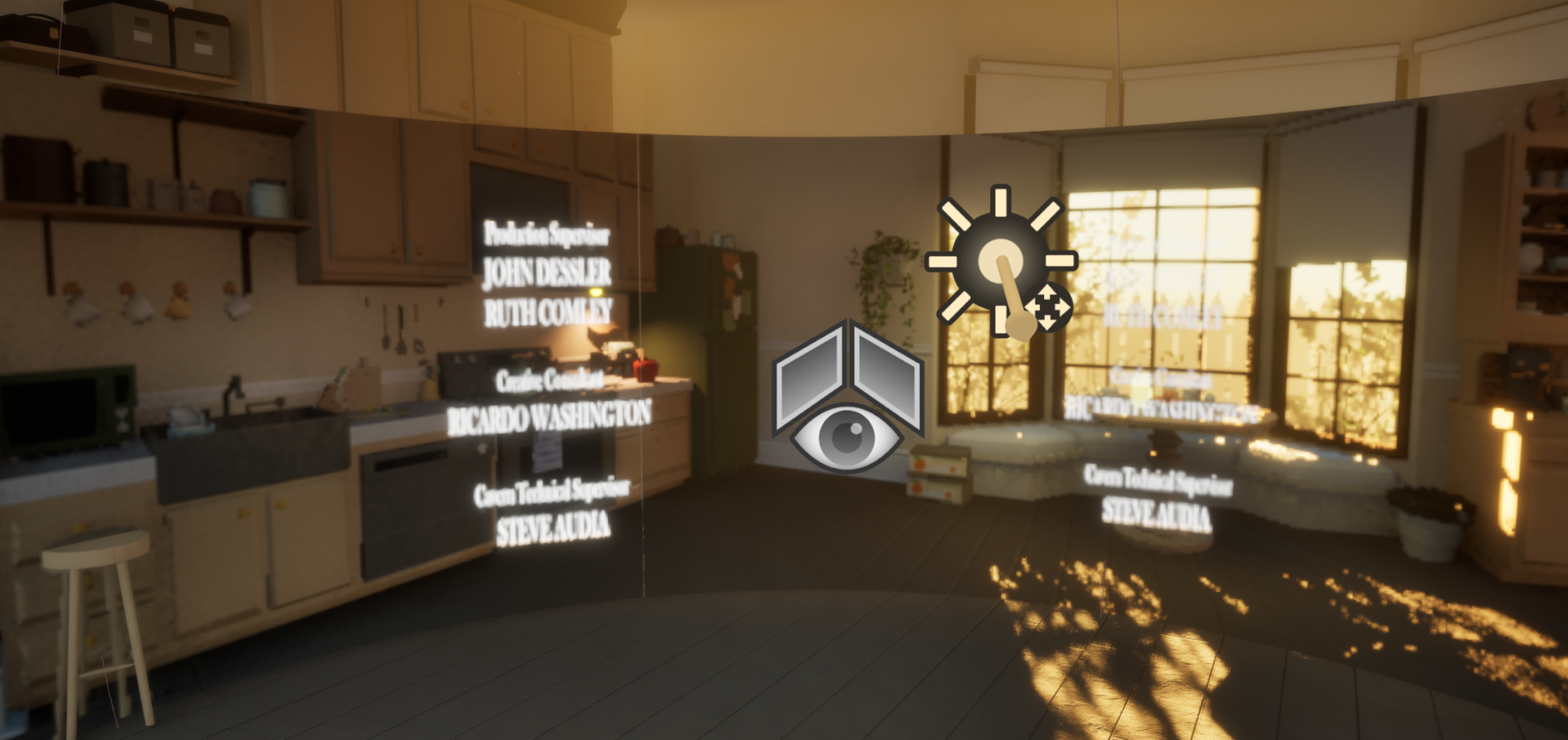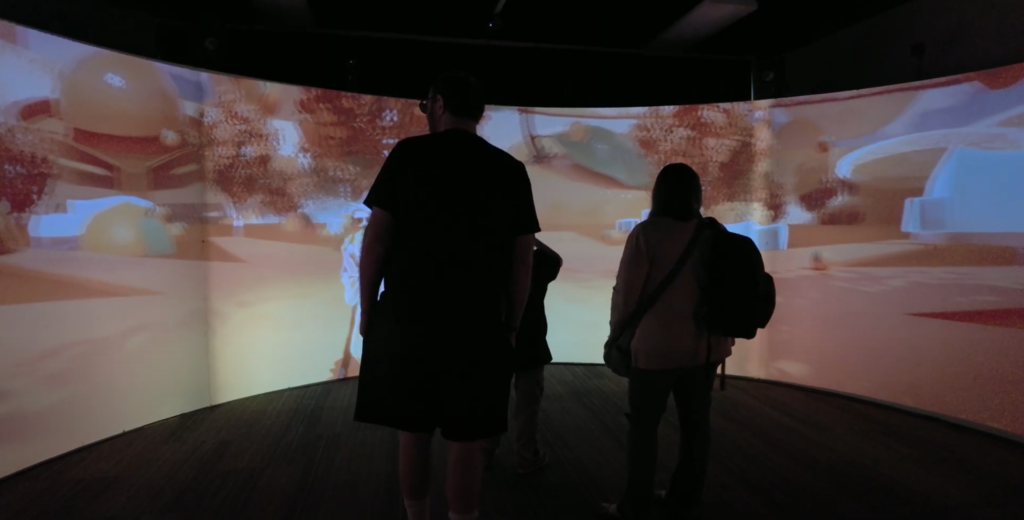
During last Saturday’s playtest, the team took on their responsibilities, and the session went smoothly. We received a lot of feedback, and after summarizing and sorting it out, we came to the following conclusions:
Strengths
- Visual Engagement & World Exploration:
- Group Reactions: Several groups enjoyed the interactive nature of looking around and following the character. They found it immersive, even expressing the desire to touch or move closer to the screen.
- Camera Movements: The camera pull-up and transitions were well-received, with viewers noting they liked the visual direction, which helps to follow the story.
- Emotion Conveyance: Body language effectively conveyed sadness, loneliness, and nostalgia at the beginning, with happiness towards the end.
- Recognition and Story Understanding:
- Clear Visual Cues: Bread and oranges were widely recognized, and multiple viewers understood the themes of memory and nostalgia, especially children, who seemed to connect the story to a breakfast setting.
- Emotional Arc: Many viewers understood the progression from sadness to joy and back to bittersweet emotions, showing that the emotional story arc resonated.
- Music & Sound:
- Emotion Through Sound: Viewers appreciated the absence of music at the beginning to emphasize sadness, and the music’s gradual presence enhanced the emotional transitions.
Areas Needing Improvement
- Object Recognition:
- Jam and Ice Cube Confusion: Jam was often mistaken for bacon, and ice cubes were misidentified as marshmallows or sugar cubes. A different texture, color adjustments, or contextual cues (e.g., jam jars, and fruit pieces) could help clarify these items.
- Transitions & Story Clarity:
- Sudden Shifts: Some groups felt the transition between memory and fantasy worlds was abrupt, suggesting a need for smoother or more gradual shifts, possibly with additional visual cues.
- Facial Expressions: Adding more facial expressions could enhance emotional conveyance, particularly in close-up shots, to avoid stiffness, especially at the beginning.
- Scene Details:
- Additional Visual Elements: Suggestions included adding jam jars, fruit pieces, or kitchen tools to the jam scene. Some viewers recommended enhancing the background with large, symbolic food items or effects.
- Margaret’s Appearance: Changing Margaret’s color or other visual characteristics based on emotions could strengthen her presence in the scenes.
- Minor Adjustments:
- Color and Lighting: Adjust the juicer color for better visibility, and add more nuanced color shades while avoiding distraction from the main elements.
- Avoiding Motion Sickness: One viewer experienced slight motion sickness, suggesting the importance of not holding certain shots for too long.
Some feedback was as we expected. For example, the transitions between scenes require further refinement, as they were incomplete due to time constraints last week. Our planned transition for stretching the scene models and adding a wormhole effect had an unexpected issue where black shadows lingered in the stretched area. This unknown issue took us some time to resolve. Additionally, the transition from the Toase Galaxy to the Orange Juice Forest was not edited well, which we plan to complete during the editing next week.
(image placeholder)
Some feedback was also beyond our expectations. For instance, the red jam slide was often mistaken for bacon. Modifying the slide’s model was a time-consuming task for the artist. The challenge comes from our setting, space/zero-g environment, in which we couldn’t find many suitable references for jams in such conditions. After incorporating audience feedback and generating reference images with AI, Lucy was able to create a jam model with a more fitting shape. Adding floating glass jars and jam knives further enhanced the intended visual effect.
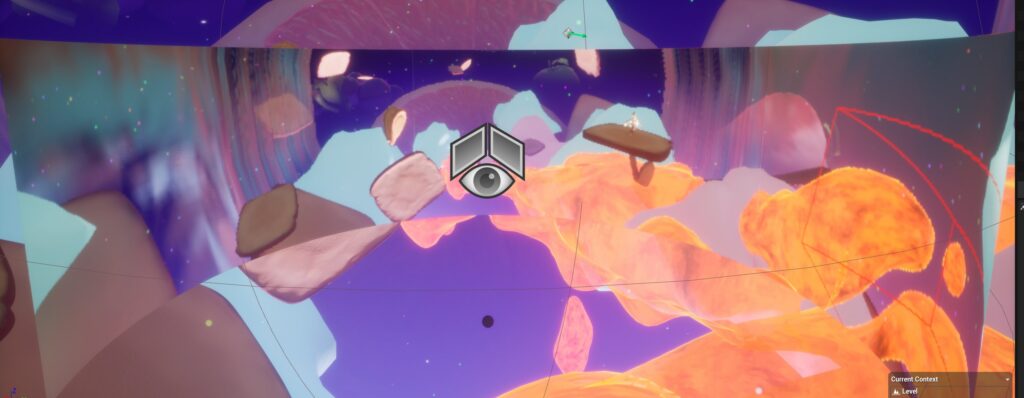
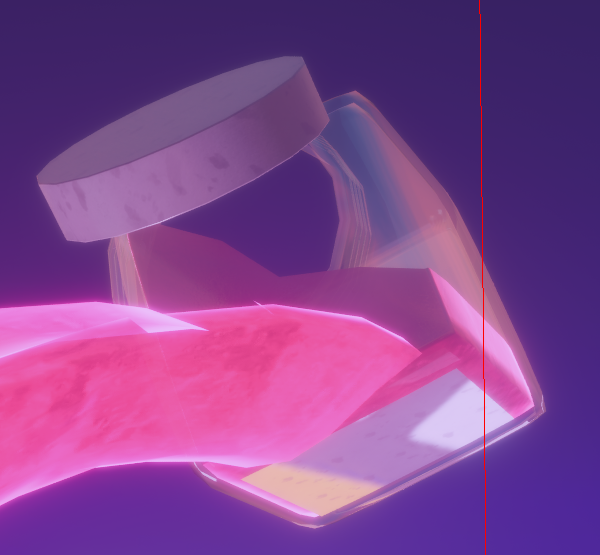
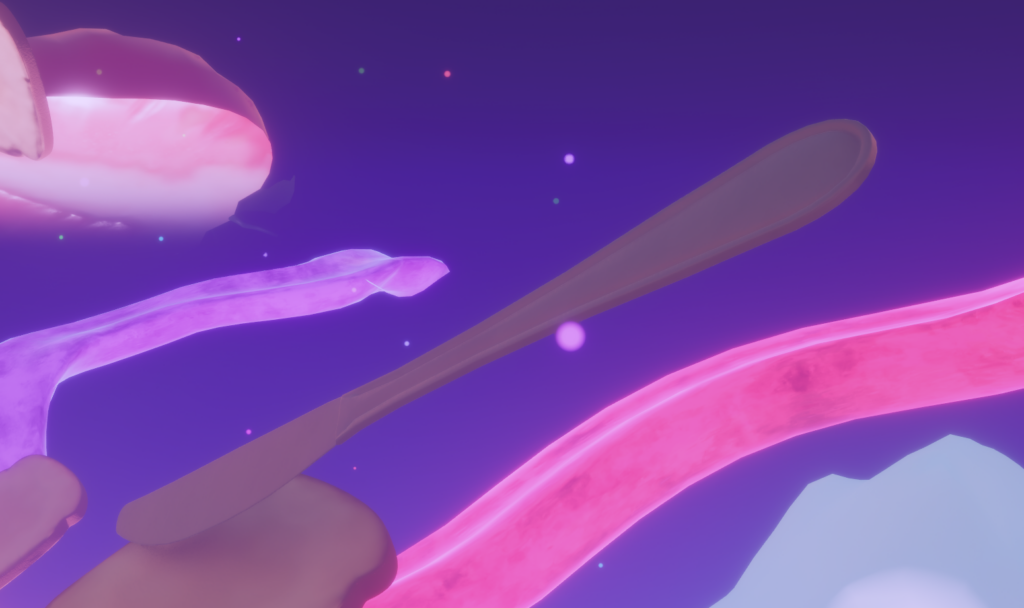
Another misunderstood element was the ice cubes in the Orange Juice Forest. Previously, because of their whitish color and only appeared as a background, most people mistook them for marshmallows or sugar cubes. While we felt these items didn’t logically belong in orange juice, the misinterpretation had to be addressed. With the technical artist’s efforts, the ice cubes now feature textured surfaces, greater transparency, and reflective properties to blend with the surrounding colors. Although some feedback suggested changes to the color scheme, our art director determined that the orange-and-white palette was visually appealing. To enrich the scene without altering the overall tone, we added floating white objects like mugs, straws, and mint to the orange juice.
(need ice cube screenshot)
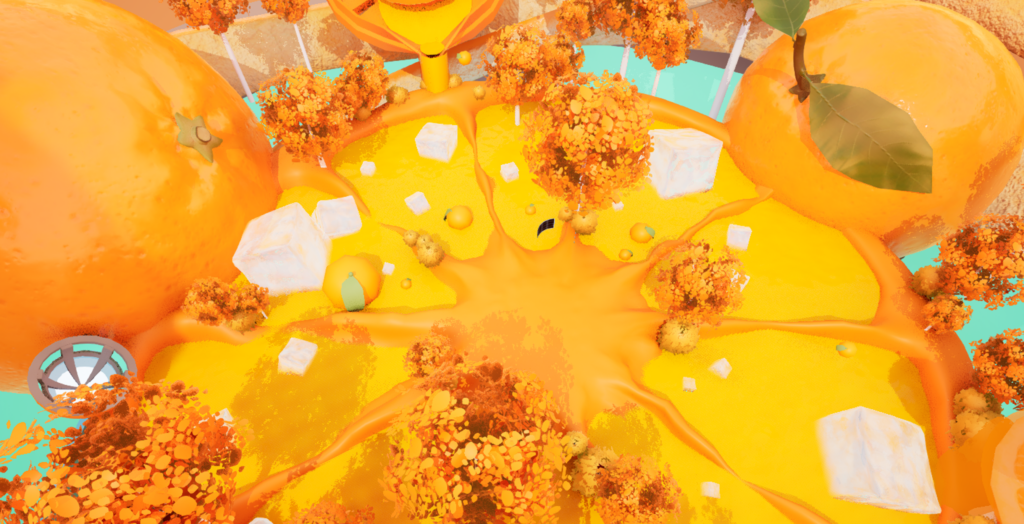
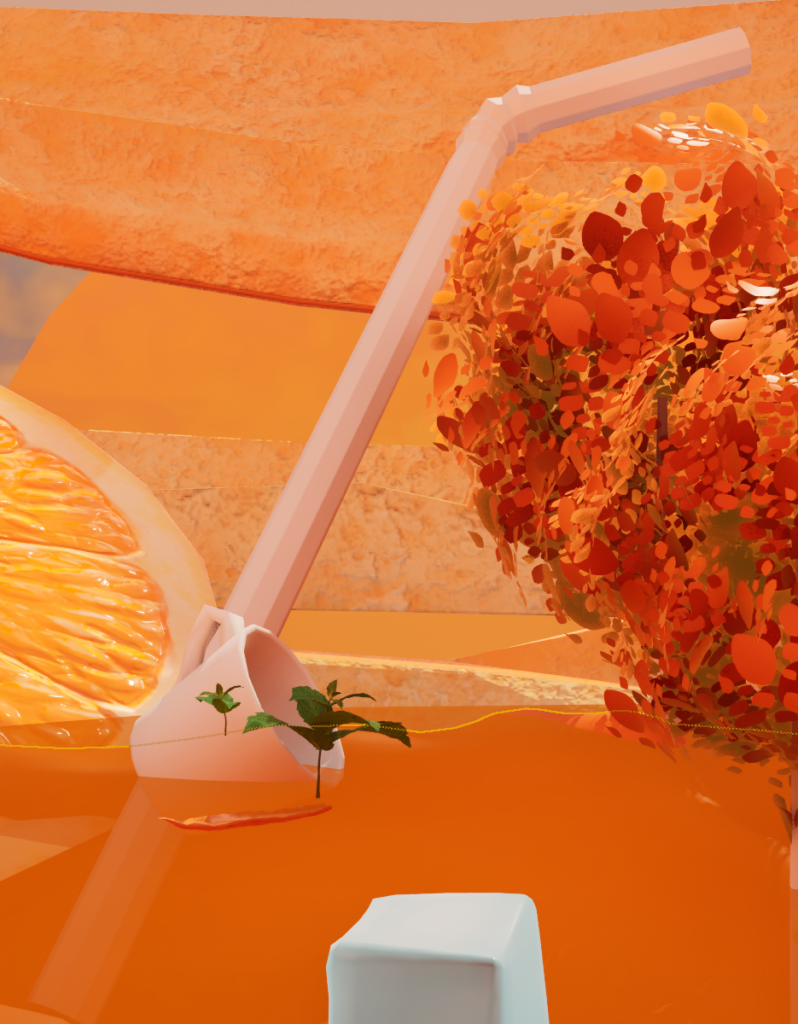
One key adjustment in animation was resolving the issue of the character’s feet sliding on the ground. As our instructor pointed out, “Whether the character’s feet are firmly planted on the ground greatly affects audience perception.” This issue was most evident in the kitchen scene. Due to the mocap studio being smaller than the cavern, Oliver couldn’t walk the full length of the room. William, responsible for mocap and character animation, extended Oliver’s walking distance by repeating a looping walking cycle, eliminating the sliding effect. Additionally, He added props like a plate in Oliver’s hands, enhancing the animation in this scene.
We also added sound effects (SFX) to the Premiere file. Since the first scene lacked music, these sound effects became especially critical. Background noise, the sound of the toaster, and a sigh were among the additions to enrich the auditory experience.
A critical piece of feedback from the instructors was that Oliver’s face appeared too dark in both the galaxy and final kitchen scenes. This might explain why some viewers felt Oliver still seemed sad at the end of the animation. We resolved this by adding one or two “fake” lights that track Oliver, ensuring his face remains illuminated.
In addition to character lighting, other lighting issues also needed attention. One pivotal moment occurs when Margaret touches Oliver before fading away. Previously, the scene was too bright, and her gradual fade-out was so uniform that it became almost unnoticeable. By reducing ambient lighting and adjusting her animation, we successfully resolved this issue.
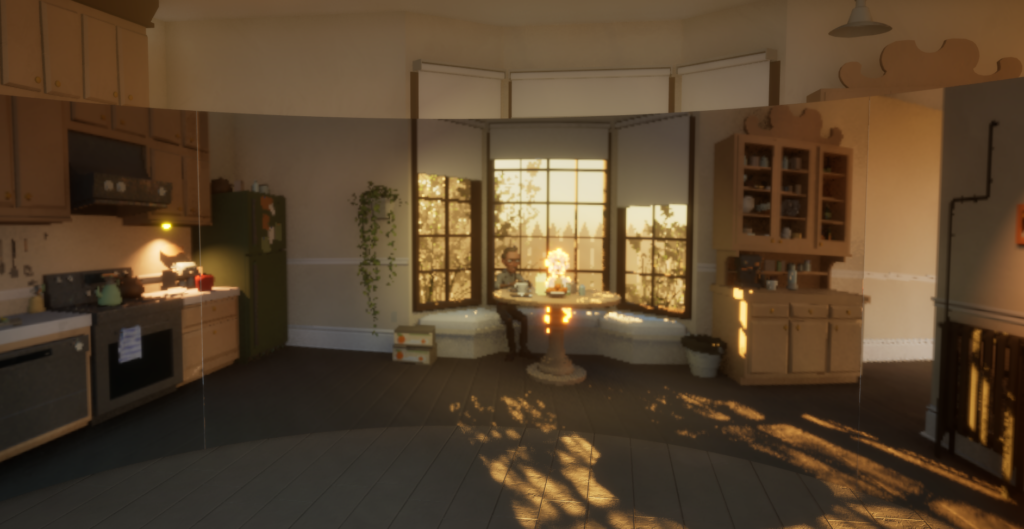
This week, we also completed the credit scene. While we had reserved time for it in previous edits, it was not given the same priority as other scenes, so we finished it this week. Additionally, smaller issues like the opacity of the memory background and sound effects in the fantasy scenes will be addressed during next week’s final edits.
